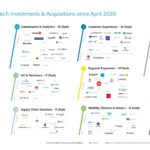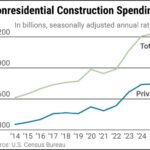In an era of volatility—from tariff shocks to fiscal deficiency—U.S. government bonds are once again taking center stage in investor conversations. With yields hovering near multi‑decade highs and macro uncertainty mounting, the question is: Are Treasurys still a reliable anchor in 2025?
Below is a deep dive into their current appeal, underlying risks, and strategic positioning for long-term investors.
1. The Bond Market Pulse: Yields, Demand, and Volatility
🔹 Yield Landscape
- As of July 11, 2025, the 10-year U.S. Treasury yield stood at about 4.43%, while the 30-year yield reached 4.96%
- Yields have remained within a broad 4%–5% range, reflecting a shift from ultra-low rates of earlier years
🔹 Demand and Market Resilience
- Despite deficit concerns, Treasury auctions in mid-2025 saw strong uptake, including a successful 30-year auction priced at 4.84%—below expectations—that calmed short-term investor anxiety
- Bond ETFs also saw renewed interest: net inflows of $5.3 billion in a week, reversing prior outflows and especially favoring intermediate-duration and long-term Treasurys
- Steve Eisman, famed for predicting the 2008 crisis, noted investor focus remains on Treasurys as no credible alternative exists, and described the yield curve’s steady range since 2022 as a sign of confidence
🔹 Volatility Triggers
- Market volatility spiked in April after proposed tariffs drove investors to offload bonds: the so-called “bond vigilantes” forced yields higher in a flash, with the 30-year yield quickly near 5%
- Experts warned of renewed turbulence—citing debt issuance policy, tariff shifts, and Fed moves—as major drivers in the months ahead
2. The Case for Bonds in 2025
✅ Elevated Starting Yields
- Yields in the mid-4% to low 5% range are significantly higher than the near-zero yields of the past decade, offering attractive current income and better risk returns than in the 2010s
- If rates stabilize or decline in the second half of 2025—as many expect once inflation cools—existing bonds provide capital appreciation potential in addition to coupon payments .
✅ Portfolio Diversification & Liquidity
- Treasurys remain the most liquid assets in global capital markets, crucial in flight-to-quality episodes where investors flee risk assets .
- Even after Moody’s downgraded U.S. debt to Aa1 in May 2025, institutional constraints and central bank demand helped stabilize liquidity, limiting forced sell-offs
- Analysts at UBS and Morningstar continue to view U.S. Treasury and high-quality investment-grade bonds as offering solid risk-adjusted returns for investors seeking income and stability .
✅ Hedge Against Equity Risk
- In uncertain times, bonds historically act as a buffer against equity volatility. With potential recession signals and trade-induced inflation shocks, Treasurys offer capital preservation and downside protection
- Some strategists foresee the remainder of 2025 benefiting from both income and modest price gains, especially if the Fed cuts rates later this year .
3. Risks and Warning Signs
❗ Elevated Fiscal Risk & Bond Vigilantes
- Moody’s credit rating downgrade and concerns over fiscal expansion and tariffs have spurred higher yields and persistent volatility, as bond vigilantes push back on perceived fiscal irresponsibility
- U.S. debt as a share of GDP is projected to rise from ~99% in 2024 to ~116% by 2034, and further to 172% by 2054 without policy changes
❗ Interest Rate Risk on Long-Term Bonds
- Longer-duration bonds remain vulnerable if yields rise further, compressing prices. Despite attractive coupons, long-dated Treasurys carry meaningful market risk unless held to maturity .
❗ Correlation Risk
- Traditionally, equities and bonds have moved inversely. However, some analysts now observe rising correlation between the two—reducing bonds’ effectiveness as a shock absorber during equity drawdowns .
❗ Liquidity Concerns Under Stress
- While the Treasury market is deep, structural shifts since 2020 have weakened resilience—less dealer intermediation, larger Treasury supply, and more leveraged funds increase liquidity risk during market stress events
4. Strategic Role of Treasurys in a 2025 Portfolio
✅ Income and Stability Anchor
- Use Treasurys as the core fixed-income asset to provide predictable income and portfolio ballast, especially for conservative or retired investors.
✅ Staggered or Barbell Maturity Positioning
- Given the steep yield curve, a combination of intermediate (5–10yr) and long-term (20–30yr) maturities can deliver both coupon yield and potential price gains if rates fall.
✅ Interest Rate Hedging
- Holding bonds can offset equity tail risk. If economic data weakens or inflation softens and the Fed pivots rate cuts, bond prices may rise—creating dual benefit.
✅ Consider TIPS for Inflation Protection
- Treasury Inflation-Protected Securities (TIPS) offer built-in CPI-based principal adjustments, safeguarding purchasing power in inflationary periods
✅ Diversify Exposure
- Complement Treasurys with short-term corporate bonds, floating-rate debt, and even international government debt, given higher yields abroad and diversified credit dynamics
5. Scenario-Based Insights
Scenario 1: Fed Cuts Begin (September–December 2025)
- If rate cuts materialize, long-dated bonds could rally, providing both yield and capital gains.
- Intermediate-term bonds benefit too, though there’s still reinvestment risk at lower yields.
Scenario 2: Inflation Surges or Fiscal Shock
- Tariff escalation or debt explosions could push inflation higher and yields upward, causing principal losses—especially in long-duration Treasurys.
Scenario 3: Continued Fiscal Oversight & Gradual Stabilization
- Investor confidence returns; yields stabilize in the 4.3–4.8% band. In this case, bonds deliver income and moderate diversification, though limited capital upside.
6. Final Verdict: Investing in Stability?
🔍 Pros of Government Bonds in 2025
- High starting yields that beat recent decade returns.
- Strong liquidity and safe-haven status, critical in market stress.
- Portfolio diversification and equity downside protection.
- Policy tailwinds ahead, with potential Fed cuts boosting values.
⚠️ Cons and Caution Flags
- Fiscal fragility, with downgrades and deficit growth looming.
- Interest rate vulnerability, especially for long-duration holdings.
- Broken negative correlation with equities at times.
- Market liquidity stress risks remain elevated relative to past decades.
On balance, U.S. Treasurys remain a viable stability instrument in mid‑2025, particularly for income-oriented investors and those seeking balance against equity risk. However, caution is warranted: risks tied to fiscal instability, future rate moves, and structural liquidity shifts require a balanced, duration-aware strategy.
📌 Key Takeaways
- 10-year yields around 4.4% and 30-year near 5% mark robust returns unseen in recent years
- Bond ETFs have seen renewed inflows, indicating trust in Treasurys despite macroheadwinds
- But fiscal deficits, rating downgrades, and tariff shocks have stirred volatility—bond vigilantes remain vigilant
- Bonds currently serve as a reliable income and diversification tool, but require disciplined maturity allocation and awareness of risk triggers.
- Strategic mix: combine Treasurys with corporate bonds, TIPS, and global fixed income for balanced exposure.


